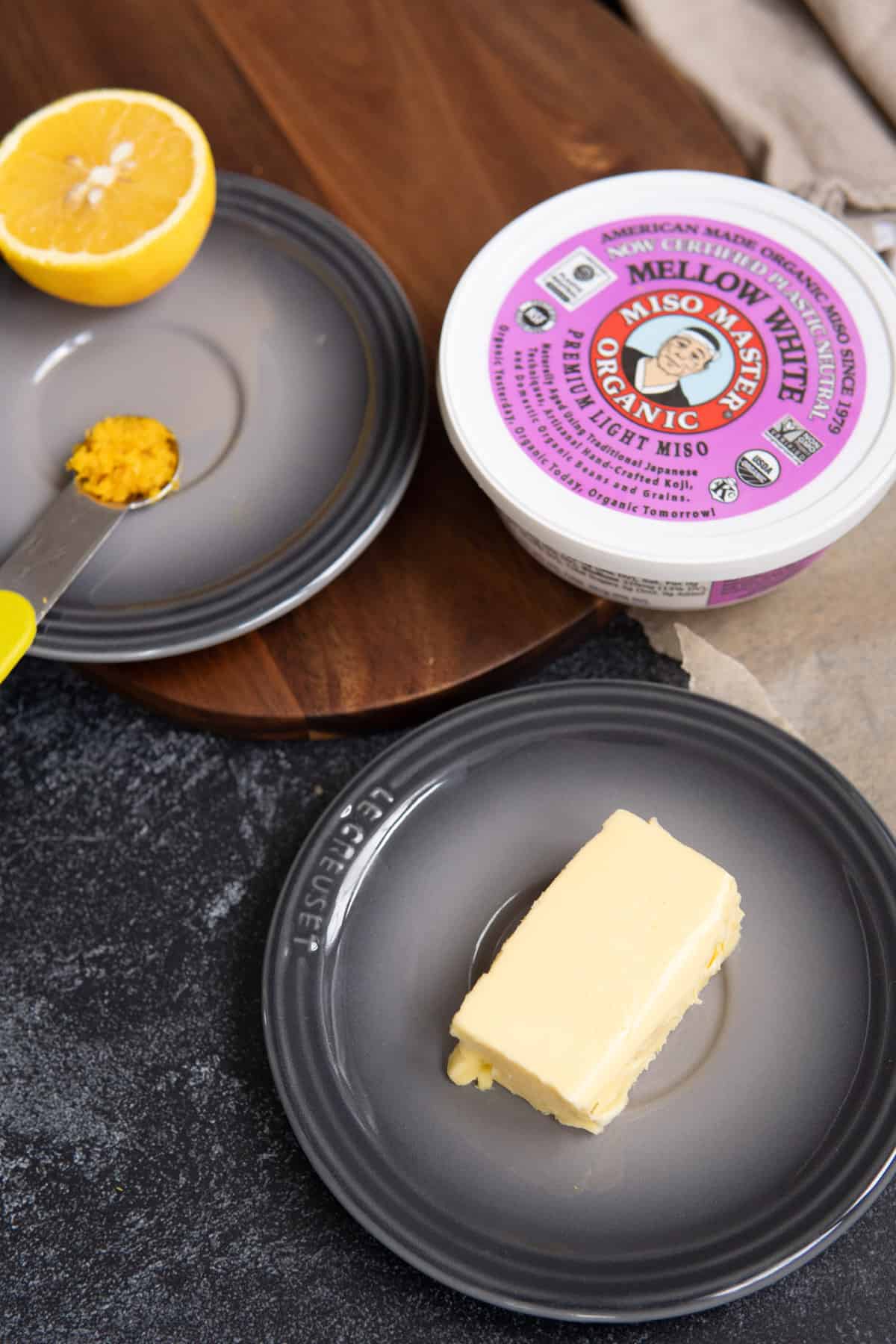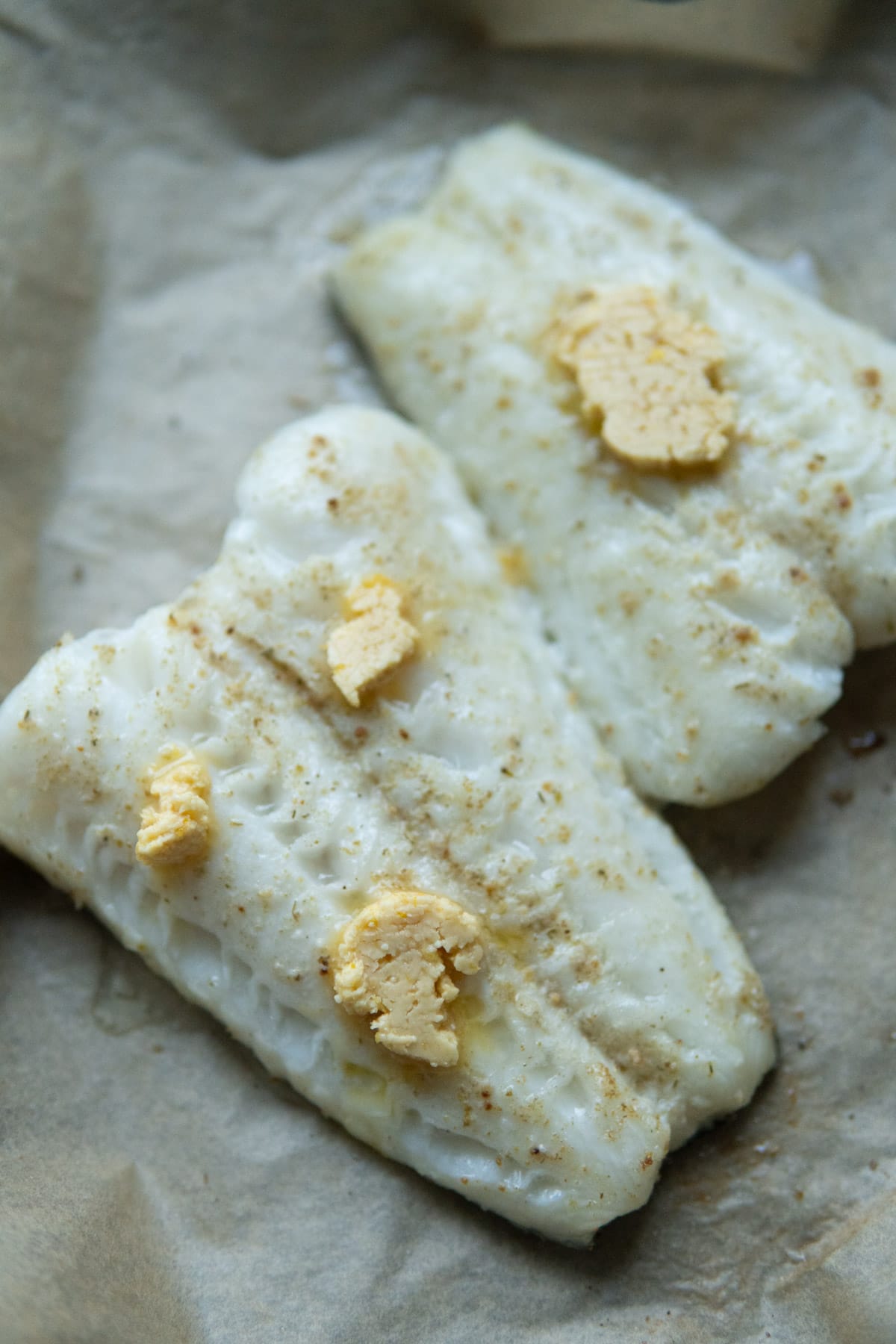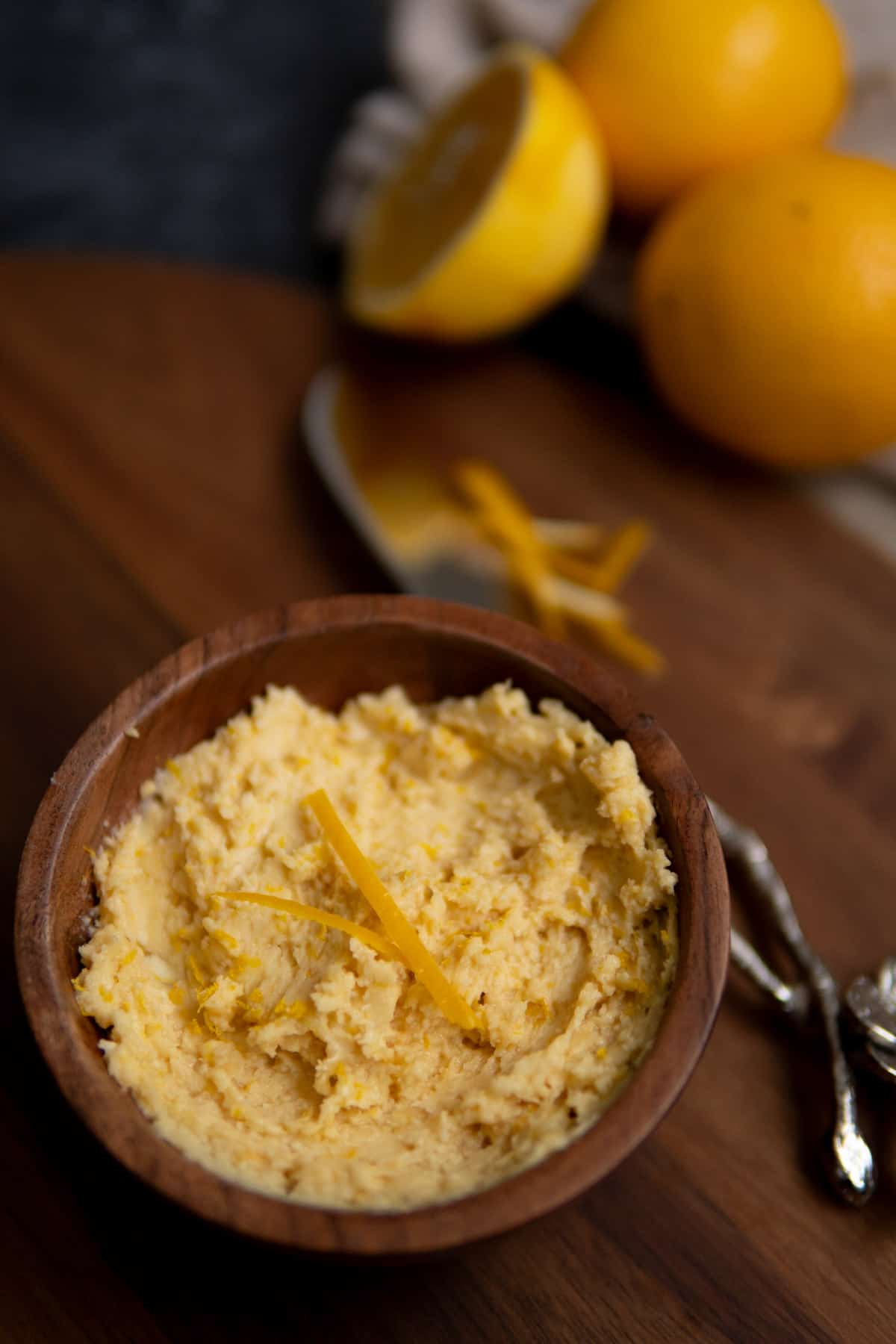Meet Miso Butter - the simple way to make any dish tastier in just 5 minutes. If you love easy and delicious food that doesn't take much effort, this recipe is for you. It's like having a magic sauce ready to go whenever you need it, perfect for those busy days!

Miso butter is a type of compound butter flavored with miso paste and a hint of orange or citrus, creating a fantastic umami flavor. This combination is an excellent flavor booster, making your fish, meat, or veggies taste amazing.
Why You’ll Love This Recipe
✔️ No Cooking Needed: Absolutely no cooking is involved. Just mix soft, room-temperature butter with extra flavorings.
✔️ Ready in Minutes: It comes together in minutes, is easy to store, and can be a sauce or topping for almost anything. I mean, it doesn't get easier than this - sign me up!
✔️ Versatile Sauce: Gluten-free and loaded with health benefits from fermented miso paste, add it to toast, veggies, or fish.
Jump to:
What is compound butter?
Compound butter is just flavored butter and a simple way to make your food taste better. You soften regular butter and mix it with various ingredients like garlic, citrus zest, citrus, wine, and fresh herbs - the creative possibilities are endless. This versatile butter is easy to prepare, roll in plastic wrap or parchment paper, and store in a fridge or freezer whenever you want to add a tasty boost to your fish, steak, or veggies without any extra cooking.
Ingredients
This miso butter recipe uses only 3 ingredients.

- Butter - salted or unsalted butter works - it's your choice. I like a hint of saltiness, so most of the time, I will opt for salted butter. Kerrygold butter is an excellent choice for this recipe.
- Citrus + Zest - oranges, tangerines, Meyer lemons, lemons, or limes - any of these will work. I also like to use not only the juice but zest as well. It adds a more potent, zesty flavor.
- Miso Paste - I prefer the mild white miso paste for this recipe. Miso Master mellow white is the one I opt to use and is also certified gluten-free.
See the recipe card for quantities.

What is Miso?
Miso is a thick, fermented paste crafted from soybeans, salt, and koji – a fungus crucial for fermentation, often derived from grains or legumes. Aged for months or even years, miso serves as a staple seasoning in Japanese cuisine. Miso can be a great addition to various dishes, including soups like miso soup and ramen, stews, dressings, marinades, stir-fry, pan sauces, and even pasta recipes. You'll have plenty of miso leftover, so try making this easy salmon rice bowl with a tasty miso ginger dressing.
Soybeans + Koji + Salt = Miso
Types of Miso
There are different types of miso, depending on the type of koji used during its creation, each with its unique umami flavor. The three main types of miso are white, yellow or light-colored, and red miso. The distinction in taste and appearance comes from the type of koji mold used during the fermentation and the grains used, such as rice, barley, soybean, or a mix. White miso is the one I prefer to use in this recipe as it is mild in flavor and has a gentle citrusy flavor with a hint of sweetness. Read here for more in-depth information on miso, koji, and its history.
Is Miso Healthy?
Miso is rich in beneficial bacteria and probiotics, similar to other fermented foods like yogurt, sauerkraut, and kimchi. The fermentation process, aided by the koji mold, contributes to the presence of good bacteria, which helps with aiding good digestion. Miso also boasts high nutritional value, containing vitamins and essential amino acids contributing to its overall health benefits. You can read more about miso and its nutritional benefits here.
Additionally, it is best not to boil miso or use it in very high heat as it will lose its probiotic benefits. When incorporating miso into hot dishes like stews, soups, stir-fries, sauces, or other recipes, it is advisable to add miso at the end of the cooking process or gently emulsify it into the liquid to preserve the good bacteria.
Also, keep in mind miso is salty so a little goes a long way.
Instructions
How to make miso butter

STEP 1. Let the butter come to room temperature and mash with a fork.

STEP 2. Add miso paste, orange zest, and orange juice and combine with a fork or spatula, mixing well.
How to shape and store miso butter
Use on top of roasted vegetables or fish with butter sauce. Wrap in plastic wrap or parchment paper and store in fridge or freezer to use later. Follow these step-by-step directions to wrap the butter and shape it into a cylinder or a log.

STEP 1. Add mixed miso butter on top of plastic wrap.

STEP 2. Wrap it tightly, shaping it into a log, and twist the ends to seal. Place it in the fridge until it solidifies.
STEP 3. When ready to use it, slice a piece and place it on hot food to let it melt into the dish.

Storage Tips
Store miso butter by wrapping it in plastic or parchment paper and keeping it in the fridge for up to a week or in the freezer for a few months. If you prefer an eco-friendly option and want to avoid plastic, consider using a glass jar or a butter bell to store this flavorful compound butter.
Don't forget to label the container with the date and flavor for easy reference.
As far as storing miso paste, it is best stored in the refrigerator in a closed, original container.
Recipe Tips
Remove the butter from the refrigerator about 20 to 30 minutes before mixing it or making compound butter. Let it naturally come to room temperature without using any heat.
Cut the butter into smaller chunks if you need to speed up the process.
Uses for miso butter
Miso butter, like other flavored butter, adds a burst of flavor to dishes. It's especially delicious on fish, steak, chicken, and steamed or roasted veggies like sweet potatoes, asparagus, and broccolini. And hey, don't forget how amazing it tastes when you spread it generously on a slice of delicious sourdough toast!
Just slice a piece of refrigerated butter and let it melt on your hot food, and voila, you have a delicious butter sauce.

FAQs
Whether miso is gluten-free depends on the ingredients used in the fermentation process and the brand that makes it. Miso from fermented soybeans or rice is typically gluten-free, while miso containing barley, wheat, or rye is not gluten-free. It is crucial to check for allergen statements and product labeling, as these can vary among brands.
Yes, this miso butter recipe is gluten-free because it uses a white miso made from soybeans and rice, doesn't use any other gluten products in the process, and is certified gluten-free.
Miso paste is available in the health or Asian sections of mainstream food stores such as Whole Foods and Wegmans. Additionally, you can find it in Asian markets and smaller health shops.
Miso is a fermented product with a long shelf life. Nevertheless, store it in its original container, tightly sealed, and in the refrigerator to ensure maximum freshness.

Pairings
These other dishes would pair nicely with miso butter

Easy Miso Butter Recipe
Ingredients
- 4 tablespoon butter, at room temperature
- 1 tablespoon white miso paste
- ½ teaspoon orange zest
- 1 tablespoon orange juice
Instructions
- Allow the butter to come to room temerature and mash it with a fork.
- Add miso paste, orange zest and orange juice. Mix with a fork or spatula, until well combined.
- Use right away or tightly wrap in plastic wrap or parchment paper, shape into a log and store in the fridge.
Notes
- Use salted or unsalted butter - per your preference (I prefer salted)
- Can substitute with other citruses like lemons, limes, tangerines, or Meyer lemons.
- Store wrapped as a log in plastic wrap or parchment paper. Alternatively, store it in a small glass jar or butter bell.
- Can keep in the fridge for up to a week or freezer for a few months.
- Remove the butter from the refrigerator about 20-30 minutes before making the recipe, so the butter can get to room temperature. To speed things up, cut up butter into smaller chunks.









Leave a Reply